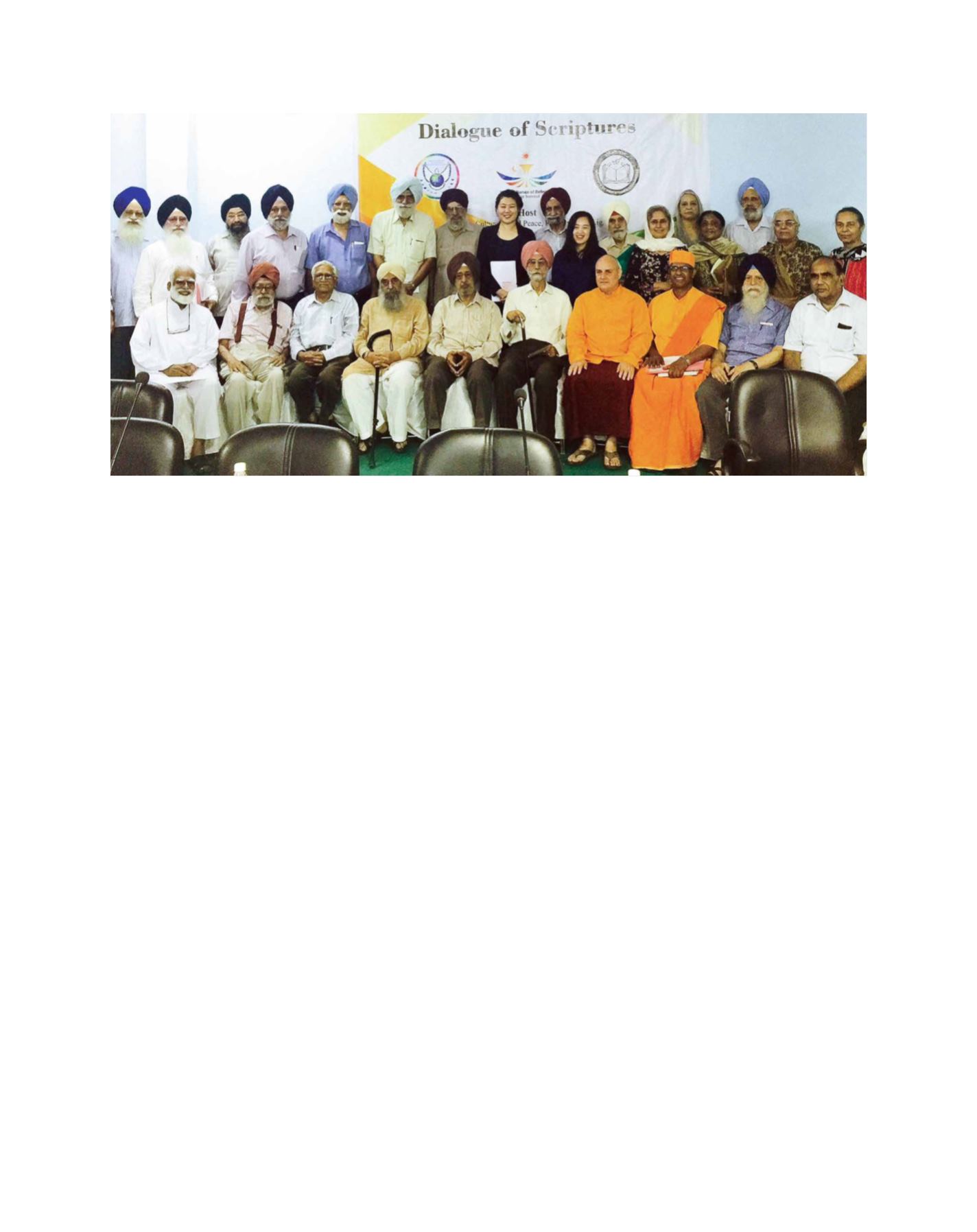

respect. Thus, the Gurus struck the precise balance to raise
the very level of existence of both men and women.
The Gurus also redefined prevailing concepts and prac-
tices which were derogatory or discriminatory to women
in relation to men, by attributing altogether new meanings
to these. For example:
yogi
(an ascetic who shuns social
responsibilities) is not the one who is celibate, but one
who remains committed to one woman;
pati parmeshwar
(concept that husband is God) was changed to
parmesh-
war pati
(God is husband);
purdah
(veil) is not to cover
a woman’s face, but man’s misplaced perception of her;
sati
is not the wife who is to burn herself on the pyre of
her husband, but one who lives in remembrance of her
deceased husband. Also, the patriarchal tradition that
lineage runs through male members of the family and is
projected through their surnames stood negated when the
tenth Guru, Guru Gobind Singh, replaced the surnames
of all Sikh men and women with ‘Singh’ (lion) and ‘Kaur’
(crown prince) respectively. This meant an independent
identity for her, irrespective of whether she is married,
divorced or single – she remains ‘Kaur’ throughout life.
Such a nomenclature abolishes not only the supremacy of
man in patriarchy but also that of woman in matriarchy. It’s
worth noting that in the process of giving equality to one
gender, the status of the other is not compromised.
The Guru makes spirituality the vehicle of change. Men
and women are considered spiritual beings, whose aim
in life is to merge with the Almighty. The Guru, in fact,
considers virtues inherent to women as ideal, indispensable
to convey the pining of the human soul for the Almighty.
He therefore ascribes feminine gender to all human beings
in his compositions. For this, the simile of a ‘bride’ for a
devotee and ‘spouse’ for the Almighty is used in the hymns
at places. Husband and wife are not considered those who
merely live together, but those who merge their soul with
God, and live as two bodies having one soul. The path
prescribed by the Guru for the merger of the soul-bride
with the Almighty-Spouse is through inculcating God’s
virtues and attributes in oneself; otherwise all embellish-
ments, such as garlands of flowers, fragrances, mascara and
all, as used by a bride to look beautiful, are a waste.
Human virtues, vices and emotions are not gender-
specific, yet certain qualities and features in the two genders
vary, given the specific biological roles each performs as
designed by nature for the propagation of the species.
Physical differences are mere biological dualities, and
mutual appreciation is the only way forward. Femininity
and masculinity are thus to be cherished, and each gender
is to complement and supplement itself with the qualities
intrinsic to the other. As the Guru sees similar potential
and promise in both genders to grow in every sphere, be it
spiritual, social or political, the Sikh ideal is to be a ‘saint-
warrior’, that is, each is to inculcate the piety of a saint and
the bravery of a warrior.
The Guru revolutionized the way women viewed them-
selves and the way they were viewed by others. His wisdom
is indispensable to put an end to all kinds of dichotomies
and divisions in society and bring about a healthy shift in
the consciousness of the people. The fact that the spiritu-
ally-awakened Sikh woman performed so well in all areas
of human endeavour without the subjugation of one gender
to the other, speaks volumes about the inherent potential
in this visionary approach.
Guru Nanak, indeed, is the pioneer of the journey of
the emancipation of women. The Guru has bestowed upon
women more than what women have sought so far; they
are yet to comprehend the vision of the Guru. The dignity
and status the Guru accords to women, and which was put
into practice more than six centuries ago, is unparalleled.
And, it is there for the taking.
Image: Institute of Sikh Studies
An interfaith meeting organized by the Institute of Sikh Studies
A B
etter
W
orld
[
] 108
















